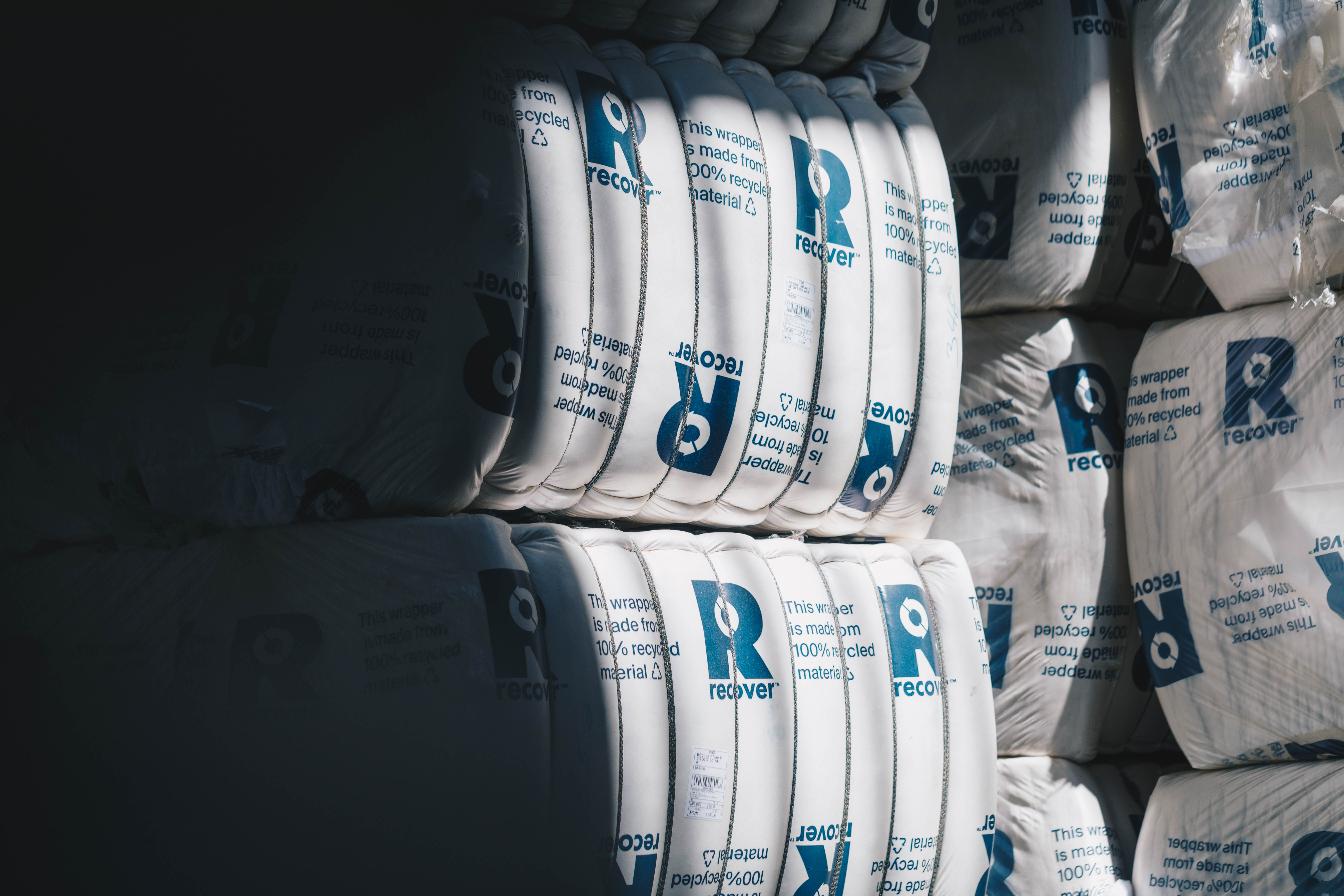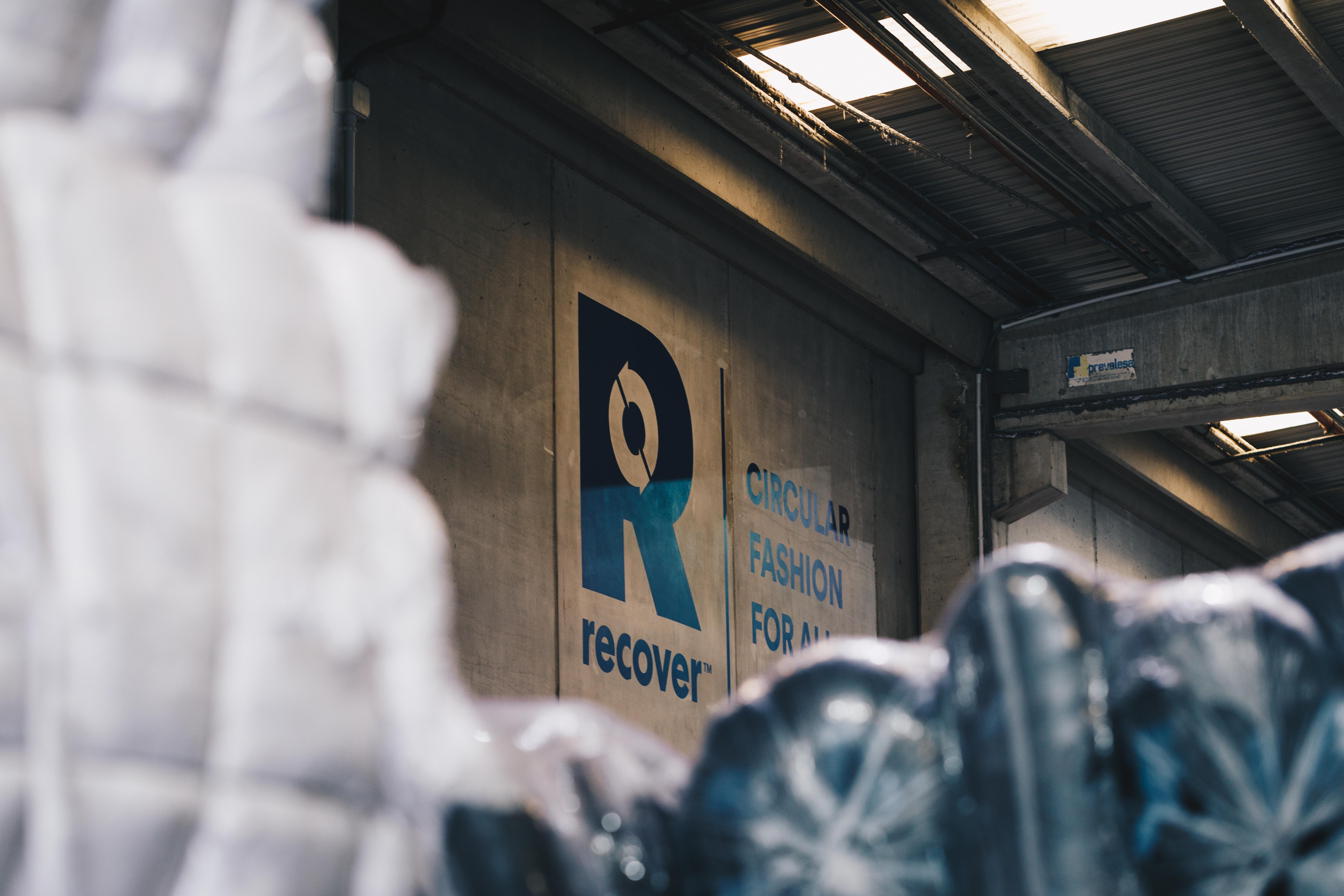Recover™ Recycled Cotton Fiber
Recover™
(
Private sector
)
#SDGAction46515
Description
Recover™ is a leading materials science company and global producer of low-impact, high-quality recycled cotton fiber and cotton fiber blends. Its premium, environmentally friendly, cost-competitive products are created in partnership with the supply chain for global retailers and brands, offering a sustainable solution to close the loop on fashion.
As a fourth-generation, family-owned company with a 70-year history in the textile industry, Recover™ is on a mission to scale its proprietary technology to make a lasting positive impact on the environment and partner with brands/retailers and other change makers to meet the industry’s sustainability targets.
Recover™ continuously tracks environmental impacts at product, process, and company level through Ecochain LCA software and other indicators in its Social and Environmental Management System. With the help of these tools Recover™ can target key hotspots for improvement, identify effective interventions and track performance against a set of well-defined KPIs.
In addition, it adheres to leading industry certifications and assessment schemes including GRS, OCS, Higg FEM and Higg FSLM. These processes and standards are rolled out across all Recover™ hubs worldwide. Recover’s LCA data has been submitted, verified, and scored by the Higg Materials Sustainability Index (MSI). As a member of Cascale, Recover™ is dedicated to use and contribute to the Higg Index tools to enable the industry to understand the positive impact of using Recover™ recycled cotton.
Recover’s aim is to have full traceability of all its material inputs, production processes and products. Due to the nature of the textile waste sector, tracking the origin of the post-industrial textile waste to the manufacturing facilities where it was generated is challenging. Recover’s first step in ensuring the traceability of the post-industrial textile waste origins is to work very closely with our direct suppliers and ensure that in the warehouses where all the textile waste is segregated, the correct work conditions are in place.
Recover™ also joined the Circular Fashion Partnership with Global Fashion Agenda, Reverse Resources, BGMEA and P4G, in early 2021. In this project, we seek to enhance traceability of our post-industrial waste to the factory of origin via the Reverse Resources platform. In order to assure the chain of custody of Recover™ recycled fibers along the supply chain, Recover™ is certified under the Global Recycled Standard (GRS), as well as under the Organic Content Standard (OCS) in the Spanish hub for organic cotton fibers.
As a frontrunner in sustainability and circularity in the textiles industry, Recover™ is always looking for the next step to take to achieve its mission: circular fashion for all. Its mission is the inspiration for its Recover™ Sustainability Strategy, supported by three key pillars: Circular products, Responsible production and supply chains and Agents of change. Within each pillar, Recover™ has defined several objectives to achieve by 2030, with key milestones along the way.
Recover™ has partnered with numerous brands and retailers, such as Revolve, Primark, C&A, DL1961 and Lands’ End, to incorporate its fiber into their collections and make huge environmental savings. According to Recover’s LCA Spain verified by EcoReview (2022), each kg of Recover™ recycled cotton fiber saves up to 2,116 liters of water and 1.73 kg of CO2 equivalent (Global Warming Potential) compared to conventional cotton.
Recover™ is investing greatly in the growth of the company with the objective to scale the production of recycled fiber to meet surging demand. To achieve this, it is opening new manufacturing facilities around the world. The hub locations have been carefully considered in Recover’s expansion plans, with the new facilities situated close to the textile waste and/or textile manufacturing, thereby being close to both supply and demand. Choosing these locations also helps reduce its carbon footprint, as the transport of the raw waste material has a significant carbon impact.
Recover™ partners with other committed actors in the industry, developing sustainable and circular solutions to drive the fashion industry towards a closed-loop system. Recover™ contributes to industry projects and associations such as Cascale, Textile Exchange, Textiles 2030, Circular Fashion Partnership, Accelerating Circularity (ACP), Global Compact, ReHubs, Policy Hubs and American Apparel & Footwear Association.
SDGS & Targets
Goal 12
Ensure sustainable consumption and production patterns
12.1
Implement the 10-Year Framework of Programmes on Sustainable Consumption and Production Patterns, all countries taking action, with developed countries taking the lead, taking into account the development and capabilities of developing countries
12.1.1
Number of countries developing, adopting or implementing policy instruments aimed at supporting the shift to sustainable consumption and production
12.2
By 2030, achieve the sustainable management and efficient use of natural resources
12.2.1
Material footprint, material footprint per capita, and material footprint per GDP
12.2.2
Domestic material consumption, domestic material consumption per capita, and domestic material consumption per GDP
12.3
By 2030, halve per capita global food waste at the retail and consumer levels and reduce food losses along production and supply chains, including post-harvest losses
12.3.1
(a) Food loss index and (b) food waste index
12.4
By 2020, achieve the environmentally sound management of chemicals and all wastes throughout their life cycle, in accordance with agreed international frameworks, and significantly reduce their release to air, water and soil in order to minimize their adverse impacts on human health and the environment
12.4.1
12.4.2
(a) Hazardous waste generated per capita; and (b) proportion of hazardous waste treated, by type of treatment
12.5
By 2030, substantially reduce waste generation through prevention, reduction, recycling and reuse
12.5.1
National recycling rate, tons of material recycled
12.6
Encourage companies, especially large and transnational companies, to adopt sustainable practices and to integrate sustainability information into their reporting cycle
12.6.1
12.7
Promote public procurement practices that are sustainable, in accordance with national policies and priorities
12.7.1
Number of countries implementing sustainable public procurement policies and action plans
12.8
By 2030, ensure that people everywhere have the relevant information and awareness for sustainable development and lifestyles in harmony with nature
12.8.1
Extent to which (i) global citizenship education and (ii) education for sustainable development are mainstreamed in (a) national education policies; (b) curricula; (c) teacher education; and (d) student assessment
12.a
Support developing countries to strengthen their scientific and technological capacity to move towards more sustainable patterns of consumption and production
12.a.1
Installed renewable energy-generating capacity in developing and developed countries (in watts per capita)
12.b
Develop and implement tools to monitor sustainable development impacts for sustainable tourism that creates jobs and promotes local culture and products
12.b.1
Implementation of standard accounting tools to monitor the economic and environmental aspects of tourism sustainability
12.c
Rationalize inefficient fossil-fuel subsidies that encourage wasteful consumption by removing market distortions, in accordance with national circumstances, including by restructuring taxation and phasing out those harmful subsidies, where they exist, to reflect their environmental impacts, taking fully into account the specific needs and conditions of developing countries and minimizing the possible adverse impacts on their development in a manner that protects the poor and the affected communities
12.c.1
Amount of fossil-fuel subsidies (production and consumption) per unit of GDP
Goal 13
Take urgent action to combat climate change and its impacts
13.1
Strengthen resilience and adaptive capacity to climate-related hazards and natural disasters in all countries
13.1.1
Number of deaths, missing persons and directly affected persons attributed to disasters per 100,000 population
13.1.2
Number of countries that adopt and implement national disaster risk reduction strategies in line with the Sendai Framework for Disaster Risk Reduction 2015–2030
13.1.3
Proportion of local governments that adopt and implement local disaster risk reduction strategies in line with national disaster risk reduction strategies
13.2
Integrate climate change measures into national policies, strategies and planning
13.2.1
Number of countries with nationally determined contributions, long-term strategies, national adaptation plans and adaptation communications, as reported to the secretariat of the United Nations Framework Convention on Climate Change
13.2.2
Total greenhouse gas emissions per year
13.3
Improve education, awareness-raising and human and institutional capacity on climate change mitigation, adaptation, impact reduction and early warning
13.3.1
Extent to which (i) global citizenship education and (ii) education for sustainable development are mainstreamed in (a) national education policies; (b) curricula; (c) teacher education; and (d) student assessment
13.a
Implement the commitment undertaken by developed-country parties to the United Nations Framework Convention on Climate Change to a goal of mobilizing jointly $100 billion annually by 2020 from all sources to address the needs of developing countries in the context of meaningful mitigation actions and transparency on implementation and fully operationalize the Green Climate Fund through its capitalization as soon as possible
13.a.1
Amounts provided and mobilized in United States dollars per year in relation to the continued existing collective mobilization goal of the $100 billion commitment through to 2025
13.b
Promote mechanisms for raising capacity for effective climate change-related planning and management in least developed countries and small island developing States, including focusing on women, youth and local and marginalized communities
13.b.1
Number of least developed countries and small island developing States with nationally determined contributions, long-term strategies, national adaptation plans and adaptation communications, as reported to the secretariat of the United Nations Framework Convention on Climate Change
SDG 14 targets covered
| Name | Description |
|---|
Deliverables & Timeline
Reduce waste generation and improve waste management in order to become a Zero Waste company by 2025.
Reduce and offset GHG emissions to be Climate Neutral by 2030
Resources mobilized
Partnership Progress




Feedback
Action Network

Timeline
Entity
Geographical coverage
Photos



More information
Countries
Contact Information
Hannah Wesselby, Marketing Manager

